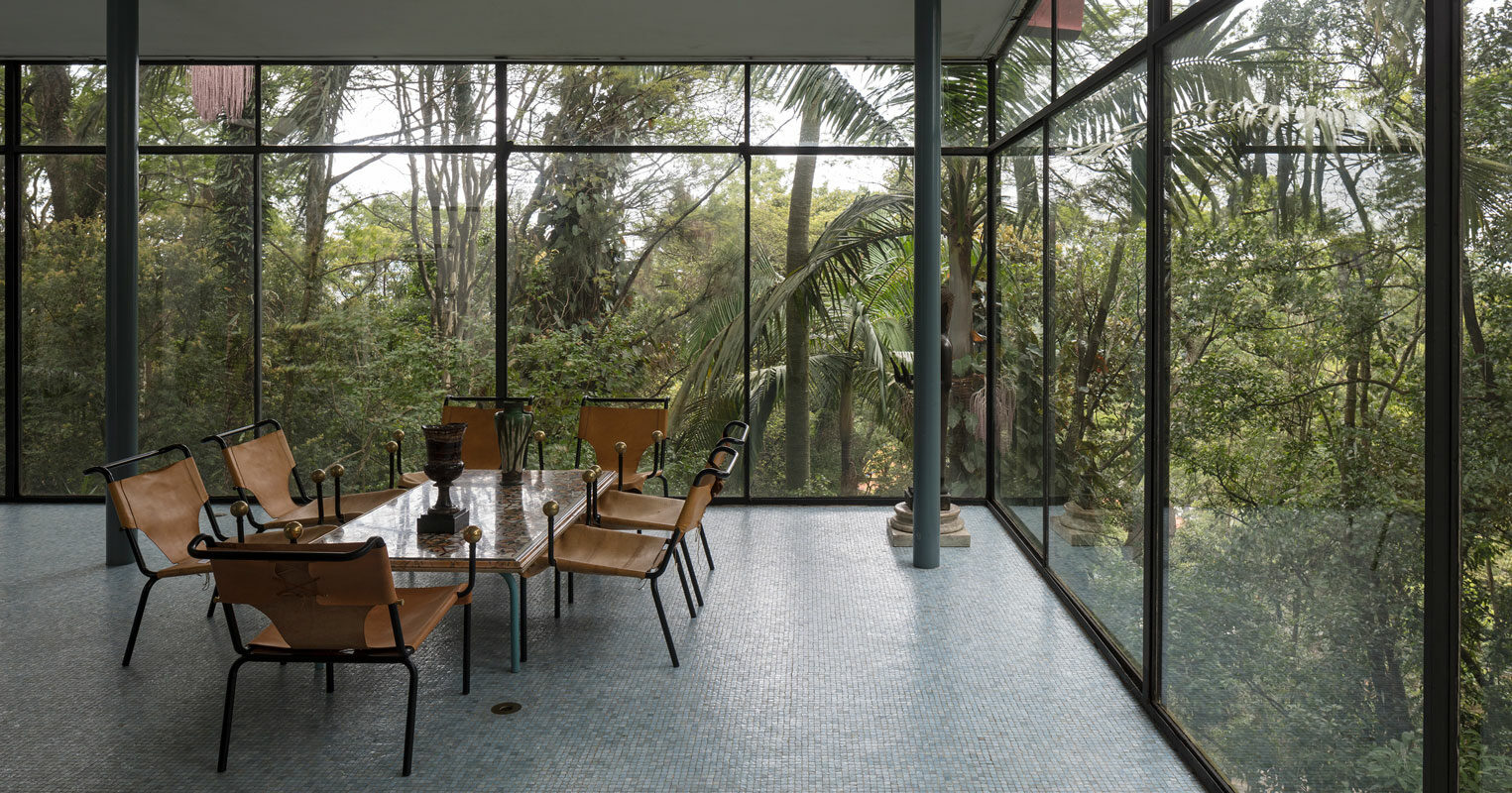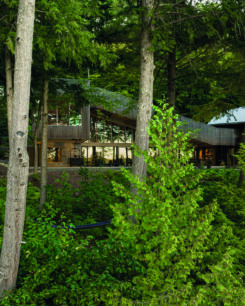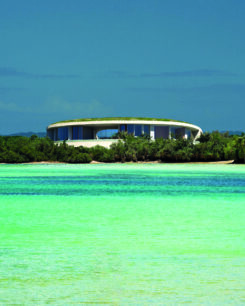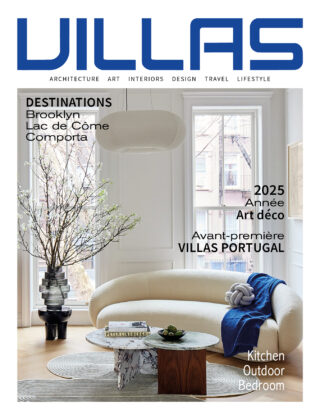Sommaire
Let’s take a look back at the exceptional career of this humanist architect, and visit the historic landmark that she created.
The pillars of the Lina Bo Bardi style: democracy, innovation and elegance
An architect’s plan for modernity
Lina Bo Bardi (1914-1992) was originally from Rome. In the late 1930s, she moved to Milan, where she met the influential architect, decorator and designer Gio Ponti. She later co-directed Domus magazine for a year, before heading to Brazil with her husband, Pietro Maria Bardi. In 1951, Lina designed and built a house which became the couple’s home. The Casa de Vidro was her first architectural accomplishment.
Lina Bo Bardi’s work is tied to the modern movement, and her accomplishments stood out in the architectural landscape of post-World War II São Paulo. Before it became the economic capital of Brazil, São Paulo was a testing ground for European architects and landscapers, who headed to the city to realise their designs. In 1928, Russian rationalist Gregori Warchavchik built the Casa Modernista, the city’s first example of Modernist architecture. It was not until 1953 that the Brazilians Oswaldo Arthur Bratke, Roberto Burle Marx and Oscar Niemeyer made their mark with the Casa Oscar Americano, and Ibirapuera Park and its public buildings. These advances also paved the way for the recognition of Afro-Brazilian roots and local popular cultures. All of this inspired Lina Bo Bardi.
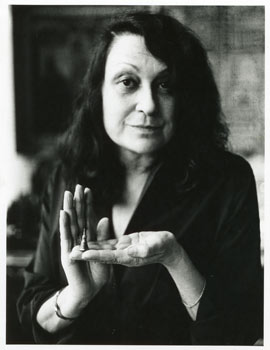
Bob Wolfenson | Courtesy Instituto Bardi
The truly unique Casa de Vidro lay the foundations for the MASP – São Paulo Art Museum (1957-1968), and later the SESC Pompeia cultural complex (1977-1986). These raised Lina Bo Bardi’s status to that of a master builder who implemented her truly innovative vision of architecture with strong style and real social utility. So much so, the MASP building is suspended. The elevation of the Brutalist structure, above one of the main roads in the São Paulo area, creates a giant public square below the museum. Inside the building, the exhibitions are presented on free plan floors, as opposed to in a succession of exhibition rooms. This was previously unheard of! In the same way that the Casa de Vidro is in direct contact with nature, the MASP does not build a “wall” between the art world and the public.
The Special Golden Lion, awarded in memory of the Italian-Brazilian architect at the opening at the 2021 Venice Biennale of Architecture, marks a milestone in the recognition of Lina Bo Bardi. “Her career as an activist designer reminds us of the architect’s role as a creator of collective visions,” says Lebanese architect Hashim Sarkis, who is the event’s chief curator “Lina Bo Bardi also illustrates the perseverance of the architect in difficult times (conflicts, immigration, etc.), and their ability to remain creative, generous and optimistic. Her buildings stand out because they bring nature, life and a sense of community together. She saw architecture as an art of gathering. ”
Armchairs and office furniture: essentials
Exhibiting annually at the Salone del Mobile, Nina Yashar’s Nilufar Gallery is at the heart of a project to revitalise previously unseen works by Lina Bo Bardi, for the benefit of the design-loving public in Europe. For years, the founder of this influential brand has been collecting pieces made by Studio d’Arte Palma, which the architect founded with her Italian colleague Giancarlo Palanti. Nilufar regularly exhibits these vernacular designs. The chairs, armchairs, desks and side tables in the collection form the perfect union between the Italian rationalist spirit of the fifties and materials with a tropical touch, such as:
- the P9 trident armchairs (1948) with bases made of jacaranda wood. These models are upholstered in velvet. They are also available as individual armchairs and fabric sofas;
- the variants of dining room chair C12, made of Pau Marfim or Guatambu wood;
- the sharp pine stool (Pinus elliottii), produced for the interior design of the SESCO Pompeia cultural centre in São Paulo:
- the Tripé armchair, with a metal frame and suspended metal seat. The latter is from the archives of the Instituto Bardi, which is the custodian of the Casa de Vidro and Lina Bo Bardi’s portfolio.
Casa de Vidro: the story of a house among the trees
Brustalist, brash with glass, and on stilts
The Casa de Vidro is considered one of the masterpieces of Latin American architecture, alongside the Casa Luis Barragán in Mexico City. It was the first private construction to grace the Morumbi district of São Paulo, a residential area created in a portion of the enchanting forest of Mata Atlântica, which had to be partly destroyed. In 1987, the house officially became part of the historical heritage of São Paulo,, and is now a place of pilgrimage for devotees of Modernism. A unique paradise that people come from afar to discover.
Often compared to Philip Johnson’s Glass House (1949) in Connecticut, as well as its ancestor – Pierre Chareau’s Maison de Verre (1928) in Paris – because of its concrete, steel and glass structure and its transparency, the Casa de Vidro is freely based on the standards of modern architecture. Built on a naturally steep site, it stands on stilts (one of the five points of modern architecture according to Le Corbusier and Pierre Jeanneret). These help to raise it above the ground.
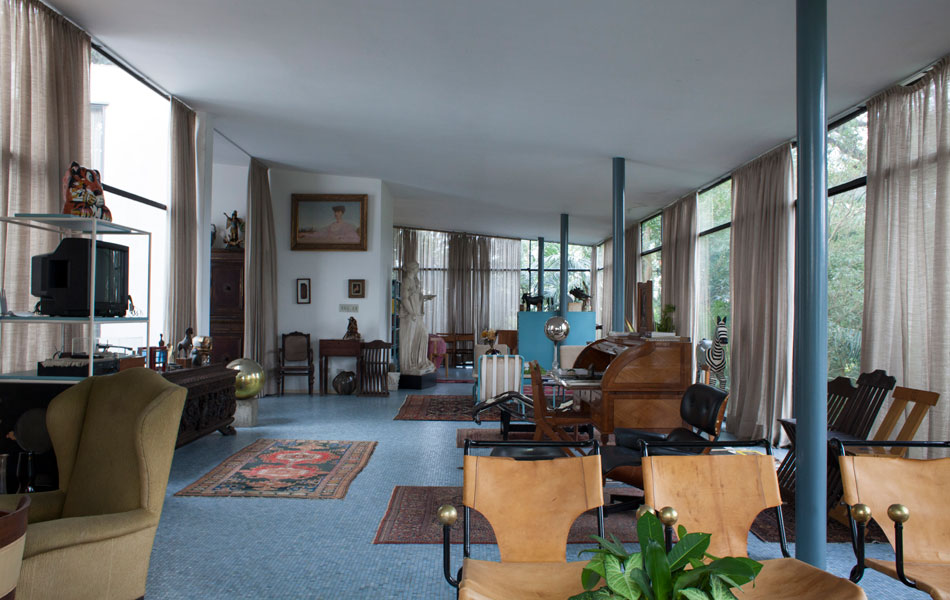
Casa de Vidro
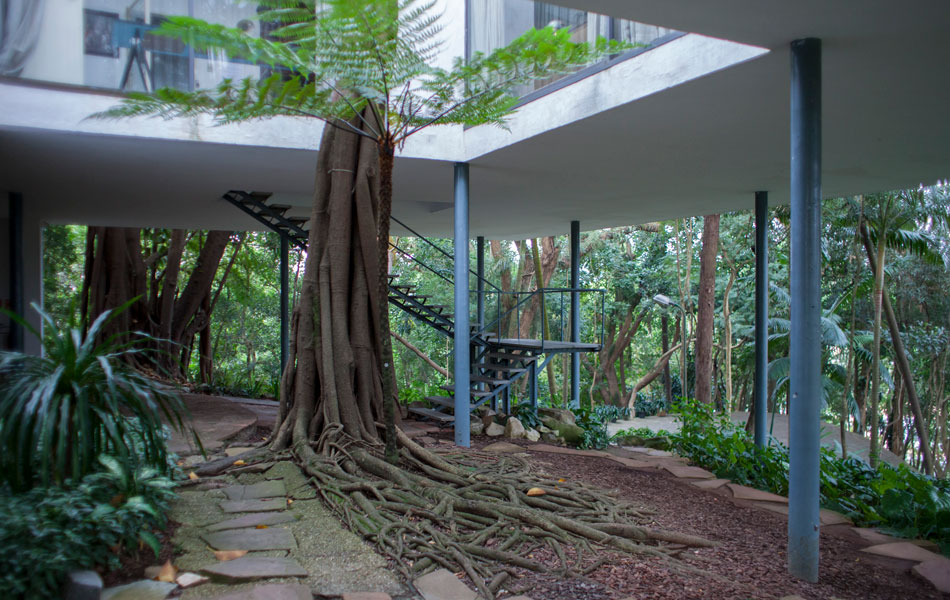
Casa de Vidro
Living and working spaces in an open-plan house
The main entrance is below the house. This is divided into two parts, around a courtyard with a hundred-year-old tree, the roots of which encircle the foundations of the building. In the front (main) part of the house, the living room – which is fully open, like an artist’s studio – boasts large bay windows, and you cannot help but gaze out at the surrounding jungle.
The interior of the Casa de Vidro is full of contrasts. The relative brightness, as well as the opacity that reigns there, combines feelings of connection with the outside world and of intimacy. The departitioning of the main part of the house goes hand-in-hand with the precise allocation given to each area (lounge, office, dining room). There is no separate library. An extraordinary collection of old and rare books used to fill every nook and cranny – and even the floor – of the house.
As an architect interested in the arts and anthropology, Lina Bo Bardi used her multidisciplinary talent here. In the words of the Bardis, the Casa de Vidro was designed as a “house where cultures coexist”. The house has indeed made itself known in the art world as a renowned meeting place, offering workshops, and hosting foreign artists visiting Brazil, such as the American painter and sculptor Alexandre Calder.
The Instituto Bardi is currently working to bring together a representative collection of furniture and works of art in the house, as well as a collection of around 7,500 books. Some of them have been donated to the São Paulo Museum of Art. The current financial support of the Brazilian furniture manufacturer Etel Design, which painstakingly recreates creations by Bo Bardi, allows the designer’s heritage and her beloved casa to be preserved.
Rua General Almério de Moura 200, Morumbi, São Paulo (Brazil)
Head to the official website of the Casa de Vidro to book your visit:
institutobardi.org
